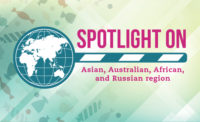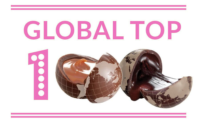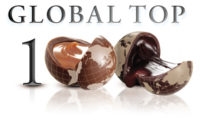For years, Candy Industry has been reporting our “Global Top 100 Candy Companies” and “North American Sweet 60,” listing the largest candymakers by sales. Over the coming year, we will continue this popular tradition with three new geographical lists, starting this month with the Asian, Australian, African, and Russian region. Russia, which straddles both Asia and Europe but is predominantly in Asia, was included to balance the upcoming European list.
Globally, some of the top confectioners are in Japan, Korea, and Russia, but some studies show China is second only to the United States in candy consumption. According to a report by U.S. News, in 2016 China was consuming 4.7 million pounds of candy and Russia was consuming 2.3 million pounds.
Euromonitor International cites Asia-Pacific confectionery sales for 2020 to be around $39.7 billion, with another $12.2 billion from the Middle East and Africa, and yet another $3.7 billion from Australasia.
A study of the region by Mordor Intelligence for 2016-2026 predicts the Middle East and Africa will be the fastest-growing market, while Asia-Pacific to be the largest market.
In a 2017 report by Global Data, the Asian-Pacific sector was third largest in value and volume, with sugar confectionery leading the sales. China was reportedly having the largest market in that area and forecasted to grow the fastest.
And, the National Confectioners Association has predicted that the candy interests of Asia-Pacific will make the region a leader in the market.
Now the pandemic may have caused some issues with employment, getting supplies and ingredients, and exporting products across borders but all research points to an increase demand and opportunity in this region.
Even though the United States and European companies like Mars, Nestle, Ferrero and others are competitive in this region, only companies headquartered in Asia, Russia, Africa, and Australia will be included in this list. Candy Industry is also now aware of several companies in this region that could make the Global Top 100 in the future.
One such company, is Want Want China Holdings, of Taiwan, which is publicized as the largest maker of rice cakes and milk in China. Their snack sales, which includes granola bars and gummy items, were around $696 million last year. Their entire business, including non-confectionery, is produced in 35 plants with over 42,000 employees.
Another is UHA Mikakuto, of Osaka, Japan, which has four plants and around 400 employees. The Japanese manufacturer of granola bars, hard tack, gummy, and low-sugar candies is estimated to have sold around $314 million last year.
The largest confectioner in Pakistan, Ismail Industries, of Karachi, has a reported 10 factories, over 2,300 employees and makes lollipops, marshmallow, chews, toffees, truffles, brittles, gum, chocolate bars, and no-sugar added candies. Their confectionery sales, reported as food segment, is around $166 million.
Kervan Gida Sanayi Ticaret, of Istanbul, manufactures licorice, jellies, marshmallows, interactive candies, hard candy, lollipops, and gum. The Turkish company has three factories, employs around 2,000, and is expected to have around $145 million in confectionery sales.
Shenzhen Amos Food Group, of Shenzhen, China, with sales of $125 million, plans to open a third factory by the end of the year, expanding into more candy categories including chocolate bars, snack bars, and filled truffles. Its new one million-sq.-ft. space will have five manufacturing centers, including a modern automatic gummy production line from Germany, an advanced research and development center, a modern logistics area, and warehousing center. The company expects this new plant to be partially operational by yearend, according to Camille Chiu, digital marketing manager.
Chiu says business is weathering the pandemic storm with the increased popularity in China for nutritional gummies and increased buying trends towards online sales and at member clubs such as Sam’s Club.
Other companies that have not appeared in our Global Top 100 include Trade Kings, of Zambia, which has several non-confectionery businesses, yet an estimated $57 million in confectionery sales, and Haigh’s Chocolates, touted as the oldest family-owned confectionery in Australia, with an estimated $50 million in sales.
While consumption of food has shifted from snacking while commuting to at-home consumption during this pandemic, Morinaga, of Tokyo, has “secured sales by developing and selling products that match the changes in customer behavior,” says company spokesperson Bridgette Kirkpatrick. “It is unclear what the new normal will look like, but we will continue to develop products that match the changes in customer behavior.”
The sales reported in previous “Global Top 100” stories on Japanese companies Ezaki Glico and Meiji Co. Ltd. included non-confectionery items and now we are able to report just their confectionery sales, which makes their respective sales appear to be significantly lower. For example, Meiji’s total food sales are about $10,075 million, while their confectionery sales are closer to $1,151 million. Ezaki Glico’s total sales are around $3,311 million, while their confectionery sales are closer to $1,282 million counting all confectionery sales both in Japan and abroad.
These stories are always a work in progress, and if we have missed a company, please reach out to the magazine to be included in next year’s story. Later in the year there will be a story listing the top European confectioners and another for candy makers in South America.




